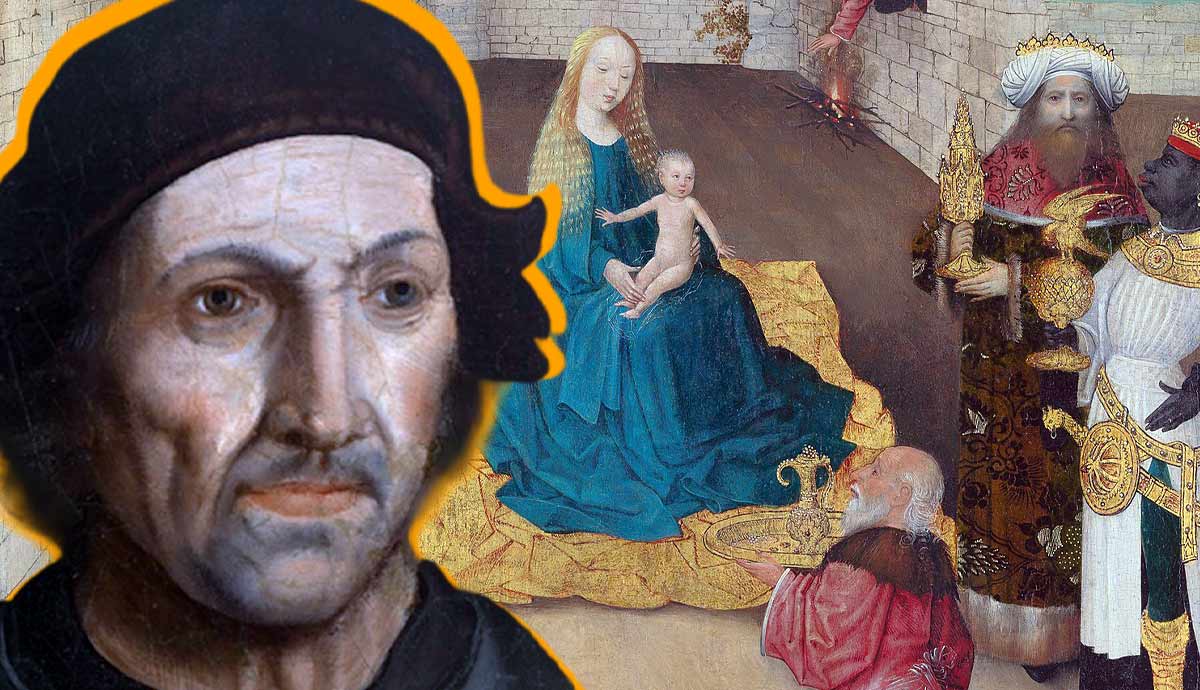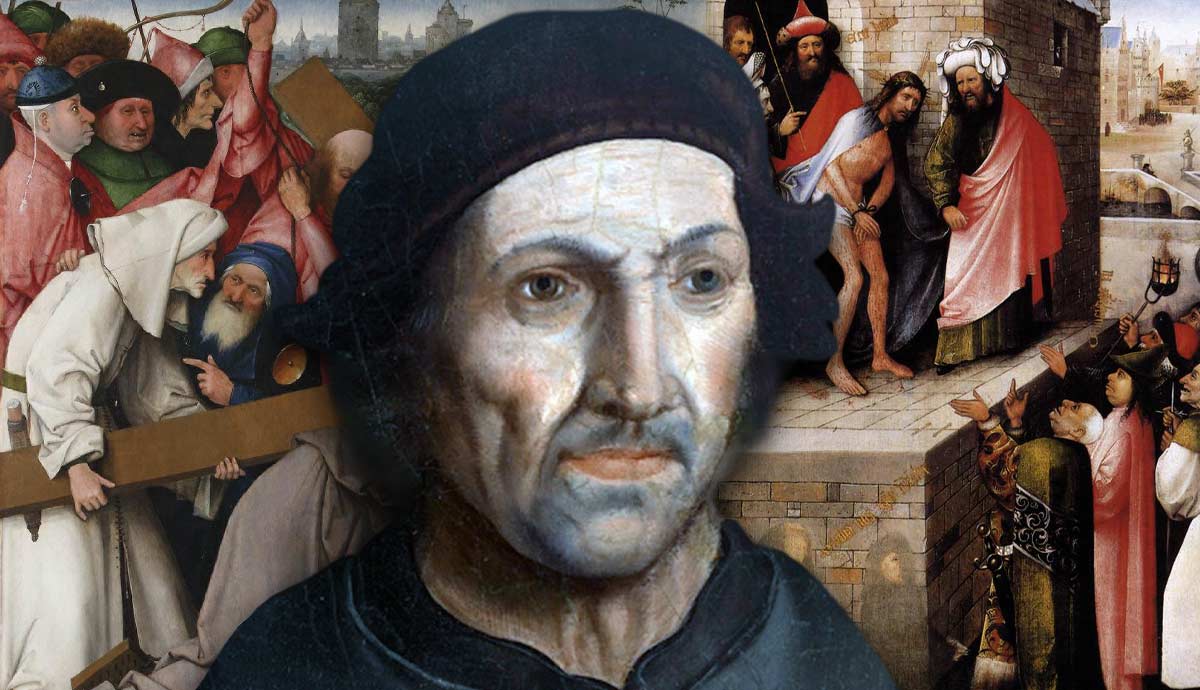
The art of the mysterious Dutch painter Hieronymus Bosch provoked a centuries-long obsession with its strange symbolism and unusual form. Not much is known about Bosch’s early years, and for that reason, the media is filled with all sorts of speculations. However, art historians managed to learn at least something about the artist’s early years in his native town of s-Hertogenbosch and possible artistic inspirations. Read on to learn where Hieronymus Bosch studied art and what his formative years looked like.
Where Did Hieronymus Bosch Study Art?

Hieronymus Bosch is one of the most famous yet mysterious artists of the late Middle Ages and early Renaissance. Compared to some other masters of his age, there is not much evidence left about him or his personality. Over the centuries, the lack of sources led to the ever-growing amount of speculations and even conspiracy theories surrounding the artist’s life and his art. Still, although the evidence of the artist’s life is scarce, it nonetheless allows us to reconstruct the basic surroundings of the artist.
Hieronymus Bosch was born in the early 1450s in the Dutch town of s-Hertogenbosch. The exact date of the artist’s birth remains unknown and was calculated only through secondary evidence, such as his earliest signatures on financial documents. According to local rules at the time, signing of such documents was allowed only for those who reached 24 years of age.

Actually, Bosch’s birth name was Jheronimus van Aken. The van Aken was a longstanding artistic dynasty that was active in Germany and the present-day Netherlands. The family moved to s-Hertogenbosch from Nijmegen, where Hieronymus’ grandfather had a workshop. Before Nijmegen, the family most likely resided in Aachen (Germany), as reflected by their family name. After they migrated to Dutch-speaking territories, the spelling of the surname most likely changed according to Dutch tradition. Much Hieronymus Bosch changed his surname to the shortened version of the name of the city he resided in. Even in the present-day Netherlands, locals prefer to call the city den Bosch instead of its complex original name.
Before Bosch, at least six generations of his family were known painters, though not a single work by them had survived. However, none of them were as innovative, original, and complex as Hieronymus, as they were mostly concerned with decorative artisanal work. Still, the circumstances suggest that Bosch’s early artistic training came from his father and older brothers. In accordance with Medieval and Early Renaissance tradition, young Hieronymus was most likely involved in art production from an early age, mixing pigments and helping with maintaining the family studio.
S-Hertogenbosch’s Art Scene

Most likely, one of the reasons for van Akens moving to s-Hertogenbosch was its profitable yet not overcrowded artistic scene. Today, s-Hertogenbosch is a small Dutch city mostly famous for its complex name and connection to Bosch and his family. At the time of Hieronymus Bosch, s-Hertogenbosch was an important center for trade and production that belonged to the Duchy of Brabant. It was one of the four centers of the state, with three others being Antwerp, Brussels, and Leuven.
The city had its share of affluent noble families and was frequently visited by the ruling class. Frequent fairs attracted merchants and buyers from the surrounding area, creating comfortable conditions for business. There were also several prominent monasteries nearby, which historically often commissioned works of art for services and inner decor. Despite all these factors, s-Hertogenbosch had only two artists working there permanently, so the van Aken family could run their business with little to no competition. Antonius van Aken, the patriarch of the family, had three sons, all of whom were employed in his workshop.

Since Hieronymus Bosch likely had their artistic training inside his own home, it is next to impossible to determine the way he was taught. According to the era’s tradition, after finishing his training, a young artist was supposed to travel to another city or country to learn something different from other artistic schools. However, we have no documented evidence that Bosch ever traveled somewhere. In major cities like Antwerp or Bruges, art education and production were controlled by painters’ guilds. In order to take commissions and sell their works, an artist had to complete training, embark on compulsory travel, and then join the guild as its new member. The absence of such a guild in s-Hertogenbosch meant that the rules of education, trade, and production were neither regulated nor documented.

However, s-Hertogenbosch had an organization that provided artists with commissions on their own terms. The Illustrious Brotherhood of Our Lady was a religious confraternity of the most respected and affluent locals, based on veneration of the Virgin Mary. The Brotherhood still exists today, mostly concerned with the preservation of the city’s legacy. In Bosch’s time, it consisted of forty members within the city and several hundred all over Europe, working effectively as a networking tool.
The Brotherhood commissioned works from local artists and eagerly employed the van Aken family. All van Aken men, including Bosch’s father and brothers, were the Brotherhood’s members, but only Hieromymus was accepted to the top tier and made a sworn member, becoming part of an exclusive group within an exclusive group. Bosch was accepted there before he turned forty, which indicates the recognition of his skill and importance.

According to the preserved documentation, Hieronymus Bosch frequently created work for the Brotherhood. His impact was not limited to paintings, as he also decorated their headquarters’ interiors and painted wooden sculptures. None of these works were of his best kind, as most of them were simple and canonical images executed in accordance with the commissioners’ guidelines.
Most likely, Bosch never left s-Hertogenbosch, staying within the limits of his studio and his native area. Still, after he left his family studio, he became famous all over Europe, with commissioners and collectors, including those representing major European royal dynasties, arriving to him instead of vice versa. Another proof of Bosch’s recognition is his marriage to Aleide van den Meervenne, a woman of higher social status from an affluent family. Soon, Bosch moved to his wife’s house and arranged his studio there. The couple never had children but lived together for almost four decades.
The Fire

Some art historians recognize a tragic accident Bosch witnessed as a child as one of the earliest influences that manifested in his later works. In 1463, a fire destroyed almost the entire city of s-Hertogenbosch, with 4,000 houses left in ruins. Most likely, the artists’ family home burned down as well. It is believed that the sight of the tragedy with enormous scope and chaos later influenced the way Bosch painted his scenes of the Last Judgement and Hell. One of the few things art historians know for sure about Hieronymus Bosch is that he was fervently religious.
Perhaps this piety was triggered in his early years when he interpreted the city fire as a punishment for the community’s sins.
Contrary to popular belief, Bosch was not a member of some mysterious cult or a creative radical. His imagery was indeed original and unusual, but did not fall out of the way of thinking of his era. Similarly, as a pious and devoted man, he did not break any religious or moral boundaries in his work, staying within safe grounds.
Hieronymus Bosch’s Art Studies: Possible Inspiration Sources

Unfortunately, we are unable to learn enough about Hieronymus Bosch to be entirely sure of his thinking process and sources of inspiration. However, art historians can make certain assumptions or suggestions based on the limited amount of facts and the context of Bosch’s surroundings. Certainly, the principal inspiration for Hieronymus Bosch’s work came from religious stories he was told as a child and services he witnessed. It is unclear if he ever encountered art produced in different regions of Europe, but he certainly was well acquainted with his local traditions.
In his paintings, Bosch adopted the basic form of his contemporary religious painting, with landscape backgrounds and architectural elements, and filled it with an incredible amount of small figures and details. Many of them reflected the depths of human depravity and misery that inevitably led to punishment in the afterlife. In his artistic essence, Bosch was a moralist who expressed commonly shared ideas of sin and salvation that were circulating in his native area.










